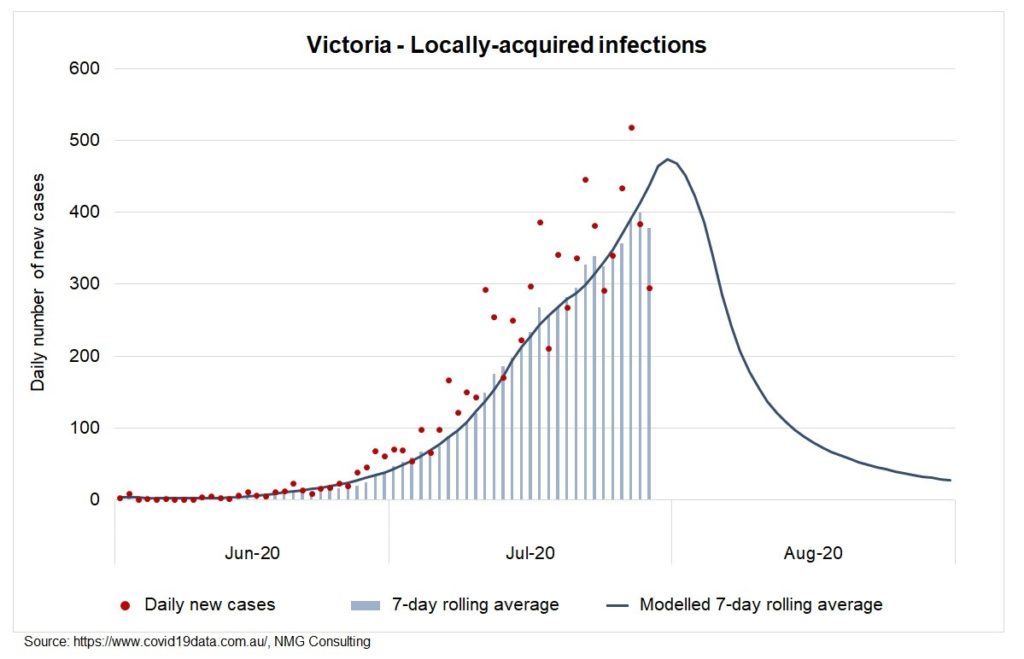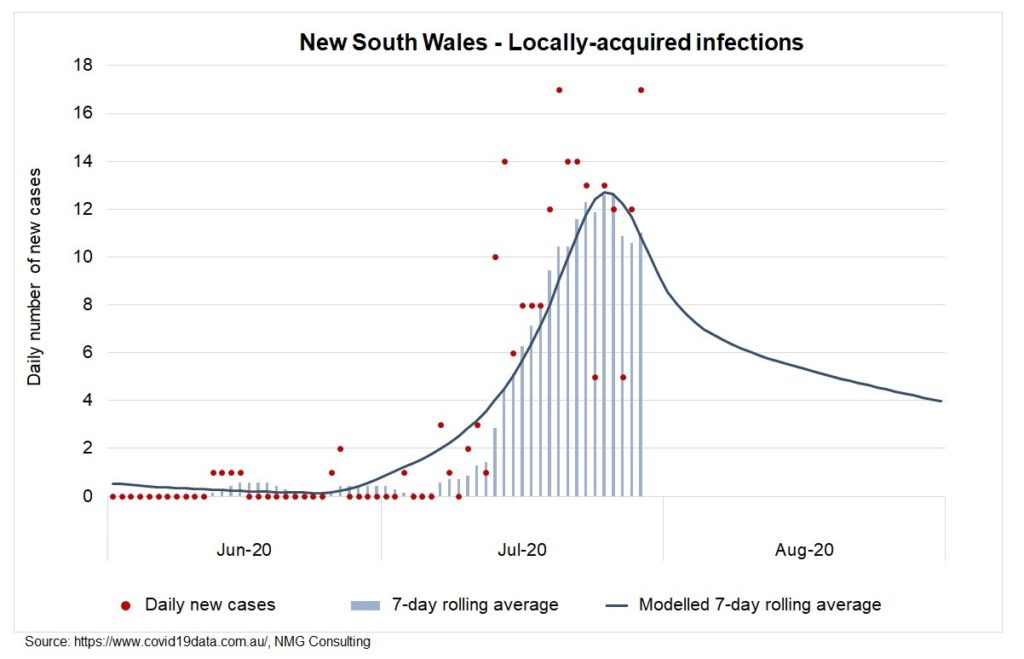As many countries around the world continue to grapple with their first wave of infections, our nearest neighbour New Zealand appears to have suppressed the virus, and one could be forgiven for hoping that Australia would be able to emulate their success.
Notwithstanding the scenario that I discussed in my previous article around a potential second wave in 2020, there was a reasonable chance that with vigilance and proper adherence to hygiene and social distancing protocols, we could have been spared further impact from Covid-19 for the balance of 2020. Sadly, this has not eventuated with leakage of overseas-acquired infections leading to local transmission.
Victoria: At the peak
We have seen some of the highest daily new case totals recorded over the past week, as well as significant volatility day-to-day (as the testing and reporting of new cases attempts to keep up). Nevertheless, the 7-day rolling average on the daily new case totals provides some evidence that the rate of transmission has slowed since mid-July. On the face of this evidence, Victoria appears to have already experienced the brunt of the second wave, and having re-entered stage 3 lockdown in early July, daily new cases can reasonably be expected to slow considerably.
One scenario generated using our model assumes that Victoria has now seen the peak of new cases (reported on 27 July), although the rolling average is projected to increase for a few more days as daily case totals begin to taper off. The implication of this ‘best-guess’ scenario is that the second wave has taken about three weeks to go from the implementation of lockdown to the peak – which is about three times the duration it took during the first wave.

The larger number of cases this time around will mean that it will take longer for daily new case totals to reduce to a more manageable level. If we assume that cases taper off at a similar rate to that observed during the first wave (as shown above), our model projects that Victoria will only fall below 50 new cases per day during the second half of August. It seems highly likely that the six week duration proposed for stage 3 lockdown will be served in full, possibly extending towards the end of August.
New South Wales: Too early to tell
Concerns have rightfully been raised about the spread of infections in New South Wales and also whether it took too long to close the borders. These concerns are supported by some evidence – the number of new locally-acquired cases started to track up around mid-July (it is worth noting that daily new case totals reported in the media typically include overseas-acquired cases). However, daily new cases over the past week have yet to continue the upwards trajectory, meaning that NSW has a chance of keeping the spread in check.

Can a lockdown be avoided? Current reliances are on high degrees of compliance around social distancing and hygiene protocols, as well as swift suppression of localised clusters through testing and tracing; but will this be enough? The scenario shown above assumes that there will be success and daily new case totals will reduce without entering into lockdown, albeit at a slower rate than that observed for NSW when it receded from the peak of the first wave.
Nevertheless, one could easily consider this an optimistic scenario, and one which could quite easily take a sharp turn for the worst. It’s clear that during the weeks ahead we will need to accept high degrees of personal responsibility and be hyper-vigilant.
Matthew Tiong, Senior Consultant

